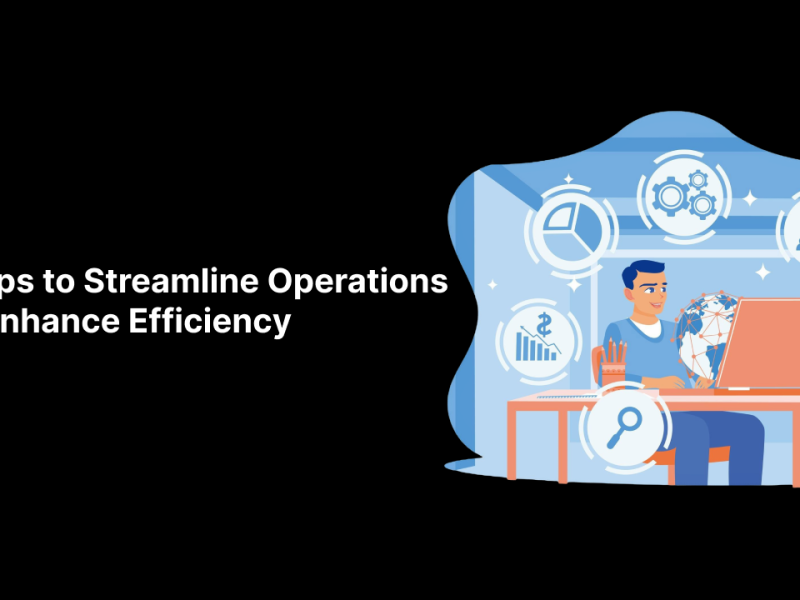Hey there, Flutter enthusiasts! Ever been curious about how secure your Flutter app is? In the whirl of app development, it is very easy to get lost in the thrill of making cool features. However, there is the elephant in the room – security. And it needs to be addressed fully. Yes, even your snazziest Flutter app could be vulnerable to security breaches if not properly protected. Buckle up because we are going to make a trip that will strengthen your Flutter apps against any threats that might occur. This article explains the best practices for securing APIs in Flutter. Ready to dive in? Let’s roll!
Flutter and APIs? What are They?
It would be best that we begin with the basics so our non-tech friends also know what we are talking about.
Flutter is an excellent open-source UI toolkit built by Google for creating mobile, web, and desktop applications with the same codebase. It helps software developers easily design appealing and efficient applications with its provisions. By its Dart programming language, Flutter offers many pre-designed widgets and tools that make development easier and ensure a smooth cross-platform deployment. A great advantage of this technology is its hot reload feature which permits any change made to the code immediately. This makes the development process quick and effective.
APIs (Application Programming Interfaces) are like bridges which are the intersection points between different software systems enabling them to communicate and share information. They create a unique set of norms and procedures for how software operations can be performed between the applications. With APIs, developers can take advantage of a particular application’s features or data without feeling any necessity to comprehend its internal code. They are used for many reasons ranging from using web services, to integrating with databases or connecting with third-party platforms mainly to enable applications to interoperate and add up more capabilities.
Hence, the expression – Flutter app development company – is just a fancy word to refer to the masters who can create elegant, smooth mobile apps using Flutter.
Tips To Secure APIs In Flutter
1. Implement Code Obfuscation
Code obfuscation is a key component in improving the security of your API integration into Flutter. Code obfuscation means turning the original source code into a very cryptic form which hinders the hacker from understanding the content or from performing any manipulation on the app’s behavior. This adds layer of security that protects sensitive information and intellectual property from unauthorized access and tampering.
2. Use HTTPS Encryption
Make sure that all communication between the Flutter app and the API server is encrypted using HTTPS (HTTP Secure). HTTPS secures data in transit by way of encryption, thus thwarting any eavesdropping or malice by attackers. By utilizing encryption technologies, HTTPS protects sensitive information like user credentials and data payloads from being intercepted and manipulated. Implementing HTTPS is a core security solution which avoids most of the network-based attacks.
All you need to do is use an SSL/TLS certificate to transmit the data. It is essential to use as certificates provide the highest level of encryption. This authentication process provides certainty to users who interact with your application. And you do not have to spend an arm and a leg on this certificate.
3. Implement Application Restriction Controls
These controls can include user authentication, access control lists, and permission management. You can reduce the risk of unauthorized actions and keep the data secure from the hands of malicious actors by setting and enforcing restrictions on app behavior and access to resources. Implementation of access restriction controls contributes to both rational usage of resources and data security.
4. Detect Jailbroken Devices
Analyze whether your Flutter app is running on a jailbroken or a rooted device. Jailbroken devices breach system restrictions, thus exposing your app to security vulnerabilities and unauthorized changes. By implementing jailbreak detection mechanisms, you can identify compromised devices and take appropriate actions. Detection mechanisms in this regard include checking for system integrity, runtime analysis, or using third-party libraries. Once discovered, take appropriate actions such as restricting access or displaying warnings.
5. Secure Storage of Credentials
Apply secure storage facilities within your Flutter application to safeguard secret credentials like private API keys, passwords, and tokens. Utilize the trusted encryption algorithms and storage APIs provided by the platform to keep credentials from unauthorized access and tampering. Do not keep credentials in unencrypted format or insecure places like configuration files or shared preferences.
6. Implement API Versioning
Adhering to API versioning requirements is a vital safety measure for the development of mobile apps. A leading mobile app development company should be focused on the versioning of API as it is necessary for maintaining compatibility and protecting interfaces. Versioning of APIs enables companies to keep the older missing links operational and integrate the necessary security updates and improvements into newer versions. This enables a more gradual introduction of new versions and reduces the possibility of security flaws associated with outdated APIs. Through API versioning, a mobile app development company demonstrates commitment to maintaining the integrity and security of its apps
7. Vet third-party libraries used for API communication
Before the integration of third-party libraries for API communication, a careful review should be done to ensure security and reliability. Make sure that libraries have been actively maintained, and routinely updated and that have a good reputation among developers. Look at the documentation of the library, its source code, and already reported issues or security advisories to check whether it is suitable for your project. Through the proper selection and verification of third-party libraries, you will be able to minimize the probability of introducing code vulnerabilities that could ultimately ruin your peace of mind and app’s security.
Conclusion
Securing the APIs in the Flutter apps is a must for ensuring the safety of the data and the development of user confidence. By promoting best practices like authentication, encryption, permission management, and API versioning, mobile app programmers would make their applications safe from any possible security risks making the user experience safe and trustworthy. This article has spelled out the seven most effective tips to secure APIs in Flutter. It is now time to go ahead and implement these practices for the sake of your security.



Naveen Khanna is the CEO of eBizneeds, a company renowned for its bespoke web and mobile app development. By delivering high-end modern solutions all over the globe, Naveen takes pleasure in sharing his rich experiences and views on emerging technological trends. He has worked in many domains, from education, entertainment, banking, manufacturing, healthcare, and real estate, sharing rich experience in delivering innovative solutions.


